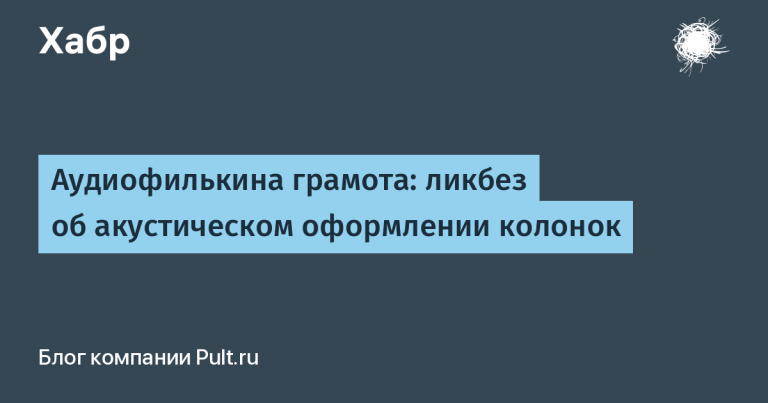5 Steps to Eliminate Runglish from IT Translations
Please treat my words with a healthy dose of skepticism, because I am not a native speaker, but just an IT translator-editor, even with 20 years of experience.
In the last six months, English-Russian translations, for obvious reasons, have practically disappeared, and for work, mainly Russian-English translations come to check, often in Runglish. I note that the “Runglish” errors in the submitted materials are more or less of the same type, which is why I suggested that it might be useful for colleagues if someone puts these errors on the shelves.
I published this memo or “road map” in my telegram channel a few months ago, I tested it many times on projects, and I was convinced of its applicability – that’s why I hang it below.
There are 5 steps in this memo:
The offer must be explicit doer and explicit action.
Passive use if the doer is unimportant or if in the asset offer is obtained more clumsythan in the passive.
Thinning out nominative constructions: be/have/carry out/conduct/perform/occur etc. + noun/adjective.
Thinning out prepositions: normally 1 piece for 10-15 words.
Condensing meanings, not parts: 1 sentence – 15-25 words.

Now in order; for clarity, I give examples, all examples are alive, nothing is sucked from the finger.
1. Use a doer and an action.
As you can see in the picture, do not confuse the doer and action with the subject and predicate. An example from one presentation, we have a sentence in the original:
XXX experts have experience in implementing more than 300 complex projects for public authorities.
The translator sends such a “frontal” translation:
XXX’s experts are experienced in implementing over 300 complex projects for public authorities.
I reject the translation, because there is a figure here, but no action: are experienced in implementing – This no actionit is rather statebut in fact “text foam rubber”. If we redo it “state” into an action, you might end up with something like this:
Our experts implemented over 300 complex projects for public authorities.
Of course, the work with the proposal does not end there, who cares what else you can dig and throw away – I invite you to read micropost.
Or other examplehere is the original:
The transmission of events in the system occurs through the execution of certain operations entered in the administrative section.
(There are specific methods recorded in the control panel to pass events to the system).
In my opinion, the translator is confused – who is the leader here? what action does it take? After analyzing the text, I come to the conclusion that the thought should be deployed something like this:
Events in the system are transmitted through certain methods that are set up in the administrative section.
Here the action is already clearly visible, and through it the actor, the translation becomes more transparent:
In this system, events are passed using specific methods available in the control panel.
2. Use a passive where the actor is unimportant, or the sentence in the asset looks clumsier.
A couple of translated sentences come up:
• The system does not record data if the customer enters only invalid details when they register, subscribe, or place orders.
• The system records data and discards invalid contact details if the customer enters both invalid and valid details and/or IDs.
In this context, it didn’t matter to us at all who / what resets or does not write data. It was important that they dumped or not recorded.
Therefore, the sentences take the following form:
• The data are not stored if the customer enters only invalid contact details upon registration, subscribing, or placing orders.
• The data are storedthough invalid data are discarded if the customer enters both invalid and valid details and/or IDs.
Go ahead.
3. Thin out constructions with verbs + nouns/adjectives.
I’ll note right away that I have nothing against such constructions, they quite have the right to life in the English language, but if there are too many of them, it often indicates that the source text was in Russian, and these constructions with minimal processing moved to translation.
For example, I’m sure you’ve often seen constructions like to conduct analysis, to perform an action, to carry out delivery – they easily turn into verbs to analyze, to act, to deliver etc.
Constructions where nouns are formed from verbs look especially ugly in this regard: to implement prioritization (= to prioritize), to carry out synchronization (= to sync), to perform communication (=to communicate, to convey, etc.)
Likewise with adjectives:
Note. For these purposes, I like to use a thesaurus on https://www.wordhippo.com/ (he knows how to search for synonyms not only by words, but also by some phrases).
One daya colleague asked me to help, she said that she could not get rid of the stub verb in her sentence conduct. Asked to see the original and version of the translation:
Based on the above, we concluded that the comparison groups were statistically comparable in terms of inclusion criteria, which allowed conduct correct comparative statistic analysis.
As the groups were statistically comparable, it was possible to conduct a correct comparative statistical analysis.
And indeed, immediately this conduct analysis you can’t throw it out – after all, the researchers carried out something and got some result. On the other hand, natives almost always do without these constructions in such cases? How do they do it?
Very simply, if the process itself is unimportant, then they rearrange the phrases so that so that the existence of the result of this process is already assumed by itself.
Because the groups were statistically comparable, their data could be used for an accurate comparison analysis.
4. Thin out prepositions.
I came across this rule by accident. Chicago Manual of Styleand at that moment I understood why the application of the previous rules did not relieve me of the feeling that I was reading “Runglish” – Russian translated texts traditionally have a lot of prepositions.

Again, I’m not against prepositions as such, just where you can say without them – natives speak without them. (Here, however, it is important not to go to the other extreme and not to string a bunch of nouns into one group, such as specific vendors controller devices vulnerability drawback).
So let’s take For examplea sentence like this (from one Concise Writing tutorial):
Photographers from space taken by satellites are indicators of urbanization and just one of the demonstrations of the human footprint.
Let’s run it through steps 1-3, cleaning it from prepositions along the way:
photos from space taken by satellites = satellite photographs
are just one of the demonstrations = demonstrate (= show)
indicators of urbanization = urban areas
are one of the demonstrations of the human footprint = show human footprint.
As a result, we can come to this option:
Satellite photographs show the spread of urban areas and the human footprint.
Consolidate meanings
Practice shows that natives, although they use short sentences, still generally prefer to make sentences “elastic” – this turns out to be more economical, because there is no need to once again make an eyeliner for a new meaning in a new sentence.
Let me explain with an example, we have such an original:
When a real attack occurs, WAF blocks it. Then WAF copies the attacking request, and then sends several similar requests to the application on its own behalf, cutting out the malicious part and cookies from them. These queries won’t hurt, but will help you know how the application would react to the attack if WAF didn’t stop it.
The translator offers this option:
In case of a real attack, WAF blocks it, copies the request and sends to the application similar requests but without the malicious part and cookies. Such requests do not harm, but show how the application would respond to the attack if it was not for WAF.
The sentence turned out to be unnaturally divided into sentences, plus an eyeliner – we repeat WAF too often. I note that when translating into Russian, this is normal, I require translators to split sentences, but when translating into English, the process is reversed.
As a result, I recommend combining the meanings in this sentence:
In case of a real attack, WAF blocks it, copies the attack request, makes it harmless by cutting the malicious part and cookie, and sends these requests to the app to check its response.
PS
About one important robbery.
Translators sometimes think that if they wrap up/abbreviate a phrase in some cool way, then this will be native. Alas, that’s not how it works. Let your text be “runglish”, but it should be unambiguously understandable to the reader as “runglish”. In order for this to happen, it is necessary to analyze the source code, decompose the meanings, and reassemble the sentence. If it doesn’t work out, torture the author (customer) with questions.
For example, the translator sends me the following sentence:
With the SDK autotracking app launches and passing them to XXX, build diverse customer communications through the source channels.
I confess, I hung over it, then freaked out, climbed into the original, it’s not much better, but some thoughts began to appear:
The SDK automatically monitors the launch of the application and passes information about it to XXX. Based on this data, you can build various communications based on the channels through which users come to the application.
After thinking about it, I got the following logic:
Users from time to time receive advertisements from different channels about our client’s application.
At some point, they launch this application on their phones.
Information about such launches is collected by the SDK.
The SDK passes this information to the server for processing.
The server processes this information and displays statistics on which channels are the most effective.
Yeah, obviously, let’s go:
The SDK auto-tracks app launches and passes this data to XXX. This data helps understand the channels used by customers and build relevant communications.
I repeat, let the proposal turn out to be clumsy and schoolboy, but in the end it should be understandable.
I hope I was able to show you how to do it. Thank you for your attention, I hope it was helpful.




